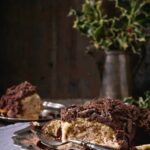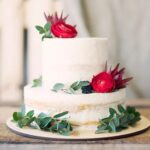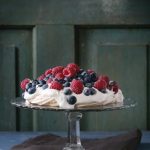Have you ever wondered, “What is piping in cake decorating?” Piping in cake decorating refers to the technique of using a pastry bag and various tips to create designs and patterns on cakes, cupcakes, and other baked goods. This skill has been a staple in the world of confectionary art for centuries and continues to be a fundamental aspect of creating beautiful and intricately decorated desserts.
Piping in cake decorating has a rich history that dates back to ancient times when bakers and pastry chefs would use rudimentary tools to pipe frosting and decorative elements onto their confections. Over time, this technique has evolved, giving rise to a wide array of piping tips and techniques that allow for endless possibilities when it comes to embellishing cakes with elaborate designs.
In this article, we will delve into the fascinating world of piping in cake decorating, exploring its history, the different types of piping tips and techniques available, the importance of this skill in creating visually stunning desserts, as well as outlining the tools and materials needed for successful piping.
Whether you are a seasoned baker looking to enhance your decorating skills or someone just starting out on their baking journey, understanding the art of piping is essential for creating beautiful and professional-looking cakes.
History of Piping in Cake Decorating
Piping in cake decorating has a rich and intricate history that dates back centuries. The art of piping began in Europe during the Renaissance period, where bakers and pastry chefs used simple tools such as animal horns and reeds to create intricate designs on their baked goods. These early forms of piping laid the foundation for the elaborate piping techniques we use today.
Origins of Piping Techniques
The earliest forms of piping involved using natural materials such as animal horns and reeds to apply icing or frosting to cakes and pastries. These primitive tools were used to create basic designs, but as the art of cake decorating evolved, so did the tools and techniques. Piping techniques began to evolve with the introduction of metal tips, which allowed for more precise and intricate designs to be created.
Evolution of Piping Tips
As cake decorating continued to advance, so did the development of piping tips. In the 19th century, metal piping tips became more widely available, allowing for a greater variety of designs to be created. Today, there are numerous types of piping tips available, each serving a specific purpose in creating different patterns and textures on cakes and other baked goods.
Modern Influence on Piping Techniques
With the advent of modern technology, such as 3D printing and advanced manufacturing processes, the world of piping in cake decorating has seen significant advancements. Piping tip designs have become more intricate and specialized, allowing for even more creativity and precision in cake decorating. This evolution has enabled cake decorators to push the boundaries of what is possible with piping, resulting in stunning works of edible art that were once unimaginable.
Types of Piping Tips and Techniques
Piping in cake decorating involves using different types of piping tips and techniques to create intricate designs, patterns, and decorations on cakes. These tips come in various shapes and sizes, each serving a specific purpose in the art of cake decorating. Some common piping tips include round, star, petal, leaf, and specialty tips for creating unique designs.
One of the most popular techniques in cake decorating is the use of the “star tip” which creates beautiful rosettes, stars, shells, and other textured designs. This versatile tip can be used to pipe borders around the edges of a cake or to create floral decorations on the surface. Another commonly used tip is the “round tip” which is perfect for writing messages, creating outlines, and adding detailed accents to a cake.
In addition to these standard piping tips, there are also specialty tips available for more advanced decorating techniques such as basketweave, ruffles, lacework, and sculpted flowers. These tips require a higher level of skill and precision but can result in stunning and elaborate designs on cakes. Mastering the use of various piping tips and techniques is essential for any aspiring cake decorator looking to elevate their skills in this art form.
| Piping Tip | Common Design Created |
|---|---|
| Round Tip | Writing messages; creating outlines; adding detailed accents |
| Star Tip | Creating rosettes; stars; shells; floral decorations |
| Specialty Tips (e.g. Basketweave) | Advanced decorating techniques; intricate designs such as basketweave or sculpted flowers |
Importance of Piping in Cake Decorating
Piping in cake decorating is an essential skill that allows bakers to add intricate designs and decorations to their creations. The importance of piping in cake decorating cannot be overstated, as it enables bakers to showcase their creativity and elevate the visual appeal of their cakes. Whether it’s creating delicate floral patterns or writing personalized messages, piping adds that extra touch of artistry that can turn a simple cake into a stunning masterpiece.
There are several reasons why piping is crucial in cake decorating. Firstly, it allows bakers to customize cakes according to specific themes or occasions. For example, piping techniques can be used to create festive holiday designs, elegant wedding motifs, or playful birthday decorations. Additionally, piping plays a key role in adding texture and dimension to cakes, making them more visually interesting and appealing.
In order to achieve successful piping in cake decorating, it’s important to utilize the right tools and materials. Piping tips come in various shapes and sizes, each producing different effects when used with icing or frosting.
Some common types of piping tips include round tips for outlining and writing, star tips for creating borders and rosettes, and leaf tips for crafting foliage and petal designs. By mastering these different techniques and investing in quality piping tools, bakers can take their cake decorating skills to the next level.
Common Piping Designs and Patterns
Piping in cake decorating allows for a wide variety of designs and patterns to be created on cakes, cupcakes, and other confectionery treats. From simple borders to intricate flowers and intricate lacework, the possibilities are endless when it comes to piping designs. Whether you’re a beginner or an experienced cake decorator, knowing the common piping designs and patterns can help you elevate your creations and impress your friends and family.
One of the most common piping designs is the classic border, which can be created using a simple round tip or a star tip. Borders add a polished look to any cake and can be as simple or elaborate as desired. Another popular design is the rosette, which involves piping swirls of frosting in a circular motion to create a beautiful floral pattern. This technique can be used to cover an entire cake or as a decorative element on cupcakes.
For those looking to add a touch of elegance to their cakes, lacework piping designs are a go-to choice. These delicate patterns mimic the look of lace and can range from simple scalloped edges to intricate lace motifs. Additionally, piping floral designs such as roses, daisies, and sunflowers can add a touch of natural beauty to any confectionery creation.
Understanding these common piping designs and patterns can serve as inspiration for both beginners and experienced decorators looking to enhance their skills in cake decorating.
Piping in cake decorating refers to the technique of using different tips and techniques for creating various designs on cakes.
Tools and Materials Needed for Piping
Piping in cake decorating is a technique that involves using various tools and materials to create intricate designs and patterns on cakes. To achieve professional-looking results, it is essential to have the right equipment at hand. Here are some of the essential tools and materials needed for piping in cake decorating:
- Piping Bags: These are cone-shaped bags made of plastic or cloth that hold the icing or frosting for piping. They come in different sizes, depending on the amount of icing needed.
- Piping Tips: These metal attachments are fitted onto the end of the piping bag to create different shapes and patterns. There are numerous types of piping tips, including round tips for writing and outlining, star tips for borders and swirls, and leaf tips for creating foliage and flowers.
- Couplers: These handy gadgets allow you to easily switch between different piping tips without having to change the entire piping bag. They consist of a base that screws onto the bag, a ring to secure the tip, and a cap to keep everything in place.
In addition to these basic tools, there are also specific materials that are crucial for successful piping in cake decorating:
- Icing or Frosting: The type of icing or frosting used for piping can greatly affect the outcome of the design. Royal icing is commonly used for intricate details and decorations, while buttercream is preferred for its smooth texture and delicious flavor.
- Gel Food Coloring: To add vibrant colors to your designs, gel food coloring is recommended as it provides intense hues without watering down the icing.
- Practice Sheets or Parchment Paper: Before piping directly onto a cake, it’s helpful to practice designs on sheets or parchment paper. This allows for error-free execution when transferring the designs onto the cake later on.
Having these tools and materials readily available is essential for anyone interested in mastering the art of piping in cake decorating. With practice and patience, along with these essentials at hand, one can create stunning edible works of art on cakes.
Step-by-Step Guide to Piping a Cake
Piping a cake is a great way to add decorative and personalized touches to your baked creations. Whether you’re a beginner or an experienced baker, mastering the art of piping can take your cake decorating skills to the next level. In this section, we will provide you with a step-by-step guide on how to pipe a cake like a pro.
Prepare Your Equipment
Before you start piping, it’s important to make sure you have all the necessary equipment on hand. This includes piping bags, piping tips, couplers, and icing. Make sure your icing is at the right consistency for piping – it should be thick enough to hold its shape but not too stiff that it’s difficult to squeeze out of the bag.
Choose Your Piping Technique
There are several different piping techniques you can use to decorate a cake, including shell borders, rosettes, leaves, and writing. Each technique requires a different piping tip and method of application. Consider what design or pattern you want to achieve before choosing your technique.
Start Piping
Once you’ve prepared your equipment and chosen your technique, it’s time to start piping. Hold the piping bag at a 90-degree angle to the surface of the cake and apply even pressure as you pipe. Remember to practice good hand control and keep steady motions as you pipe around the cake.
By following this step-by-step guide, you’ll be well on your way to mastering the art of piping in cake decorating. Experiment with different designs and techniques to create beautiful and intricate decorations on your cakes. With practice and patience, you’ll soon become confident in your piping skills and impress friends and family with your stunning cake creations.
Tips and Tricks for Successful Piping in Cake Decorating
Piping is a fundamental skill in cake decorating that involves using a pastry bag and different piping tips to create various designs, patterns, and textures on cakes and other baked goods. It allows decorators to personalize their creations and add intricate details that make the final product visually appealing. Mastering the art of piping requires practice, patience, and precision, but with the right tips and tricks, anyone can elevate their cake decorating skills to the next level.
One important tip for successful piping in cake decorating is to ensure that the frosting or icing consistency is appropriate for the desired design. Different designs require different consistencies – for example, a stiff consistency is ideal for creating intricate shapes and flowers, while a medium consistency works well for borders and simple outlines. Understanding these differences and adjusting the consistency accordingly will greatly improve the outcome of your piping work.
Another helpful trick for successful piping is to maintain steady hand movements while applying pressure to the pastry bag. Consistency in pressure and movement will result in smooth and uniform lines, whereas inconsistent pressure or shaky hands can lead to uneven or wobbly designs. Additionally, practicing on parchment paper or a practice board before piping directly onto a cake can help refine your technique and allow you to perfect your designs before committing them to your final creation.
Furthermore, it’s essential to invest in high-quality piping tips and bags to achieve professional results. Using durable materials will not only ensure consistent performance but also make the decorating process more enjoyable.
Additionally, keeping your equipment clean and organized will contribute to a smoother piping experience and maintain the integrity of your designs. These tips and tricks are just some of the many aspects that contribute to successful piping in cake decorating, ultimately enhancing the overall appearance of your baked creations.
Conclusion and Final Thoughts on Piping in Cake Decorating
Piping in cake decorating is an essential skill that can take your cakes from ordinary to extraordinary. The art of piping has a rich history and has evolved over time, with various techniques and designs being developed. Understanding the importance of piping and mastering the different types of piping tips and techniques can greatly enhance the overall look and appeal of your cakes.
It’s important to note that piping in cake decorating requires specific tools and materials to achieve the desired results. These include piping bags, couplers, and a variety of piping tips to create different designs and patterns. Different types of frosting, such as buttercream or royal icing, also play a crucial role in successful piping.
Whether you are a beginner or an experienced baker, mastering the art of piping can greatly elevate your cake decorating skills. By following a step-by-step guide and employing various tips and tricks, you can achieve beautiful designs and patterns on your cakes.
With practice and patience, you can become proficient in this art form and create stunning masterpieces for any occasion. So, next time someone asks you “what is piping in cake decorating,” you will be able to confidently explain this fundamental aspect of creating beautifully decorated cakes.
Frequently Asked Questions
What Is Piping a Cake?
Piping a cake is the process of decorating it with icing by using a pastry bag and various piping tips. This technique allows for intricate designs, writing, and borders to be added to the cake’s surface.
How Do You Make Piping for Cake Decorating?
To make piping for cake decorating, you’ll need a pastry bag and a variety of piping tips. The first step involves preparing the icing or frosting to the right consistency, then filling the pastry bag with the icing and attaching the desired piping tip. Once everything is ready, you can start piping your design onto the cake.
What Are the Basic Piping Tips for Beginners?
For beginners in cake decorating, it’s essential to start with basic piping tips such as round, star, and leaf tips. These are versatile and can be used for creating simple designs like dots, stars, rosettes, and leaves. Once comfortable with these basic tips, beginners can then move on to more complex designs and different piping techniques.

Welcome to my blog about home and family. This blog is a place where I will share my thoughts, ideas, and experiences related to these important topics. I am a stay-at-home mom with two young children. I hope you enjoy reading it! and may find some helpful tips and ideas that will make your home and family life even better!





